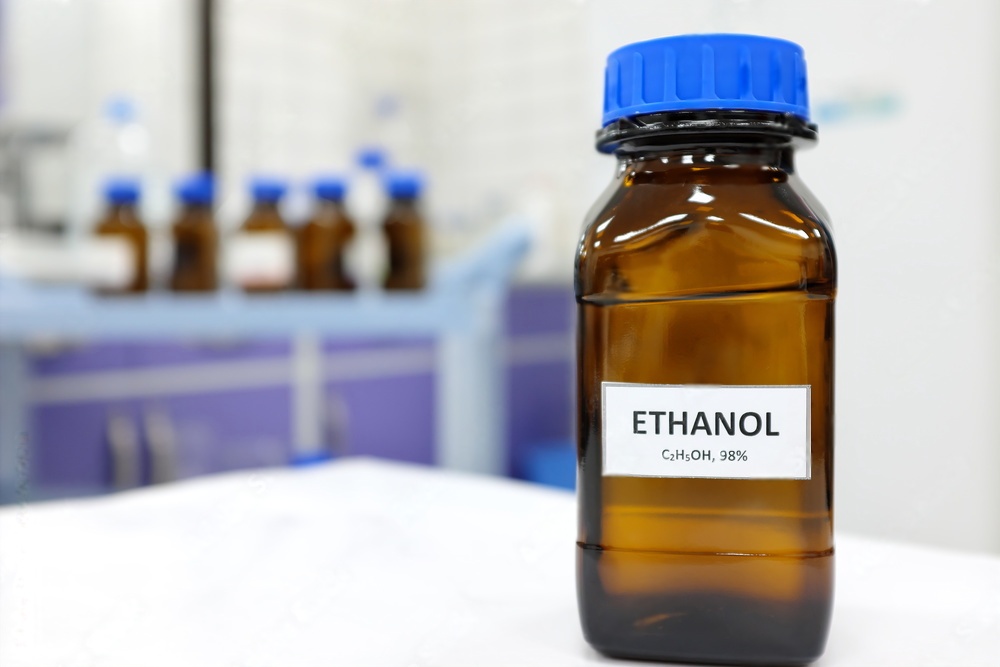C2H5OH is the chemical formula for ethanol, a colorless, flammable liquid widely known as drinking alcohol or ethyl alcohol. It’s one of the oldest and most versatile organic compounds, used in beverages, fuel, medicine, and industry. The formula breaks down as:
- C₂: 2 carbon atoms
- H₅: 5 hydrogen atoms (plus 1 in the OH group, totaling C₂H₆O)
- OH: A hydroxyl group (oxygen + hydrogen) defining it as an alcohol.
C2H5OH Chemical Name: Breaking Down the Terminology
The chemical name for C2H5OH is ethanol (IUPAC) or ethyl alcohol. Its systematic naming follows:
- Prefix “Eth-“: 2-carbon chain.
- Suffix “-anol”: Alcohol functional group (-OH).
Common synonyms include grain alcohol(from fermented crops) and denatured alcohol (industrial ethanol with additives to prevent consumption).
C2H5OH Molar Mass: Calculating Molecular Weight
The molar mass of C2H5OH is 46.07 g/mol, calculated as:
- Carbon (C): 12.01 g/mol × 2 = 02 g/mol
- Hydrogen (H): 1.008 g/mol × 6 = 048 g/mol(5H in C₂H₅ + 1H in OH)
- Oxygen (O): 16.00 g/mol × 1 = 00 g/mol
Total = 24.02 + 6.048 + 16.00 = 46.068 g/mol(rounded to 46.07 g/mol).
also read: Decoding HCOOCH CH2 H2O: Chemistry, Misconceptions, and Real-World Relevance
Key Properties of Ethanol (C2H5OH)
|
Property |
Value | Significance |
|
Boiling Point |
78.4°C (173.1°F) | Low for easy distillation |
|
Density |
0.789 g/mL (20°C) |
Lighter than water |
| Solubility | Miscible with water |
Ideal for disinfectants & solvents |
| Flash Point | 13°C (55°F) |
Highly flammable; requires safe storage |
Where You Encounter C2H5OH: Everyday Uses
- Beverages: Alcoholic drinks (beer, wine, spirits) typically contain 5–40% ethanol.
- Fuel: Gasoline blends (E10/E85) reduce emissions.
- Disinfectants: Kills microbes in hand sanitizers (60–90% ethanol).
- Solvents: Used in perfumes, paints, and pharmaceuticals.
- Industrial: Feedstock for chemicals like acetic acid or ethylene.
Safety & Handling of C2H5OH
- Flammability: Store away from sparks/open flames (flash point: 55°F).
- Consumption Risks: Pure ethanol causes poisoning; denatured versions are toxic.
- Regulations: FDA governs beverage/food-grade ethanol; industrial grades follow OSHA guidelines.
FAQs About C2H5OH
Q: Is C2H5OH the same as rubbing alcohol?
No! Rubbing alcohol is isopropanol (C₃H₇OH), not ethanol.
Q: Why is ethanol added to gasoline?
It oxygenates fuel, reducing CO emissions (mandated in the US Clean Air Act).
Q: Can ethanol be consumed safely?
Only beverage-grade ethanol (diluted). Pure ethanol (95%+) damages tissues.
Fun Fact:
The “proof” of alcoholic beverages in the US is twice the ethanol percentage (e.g., 80-proof vodka = 40% ethanol).

